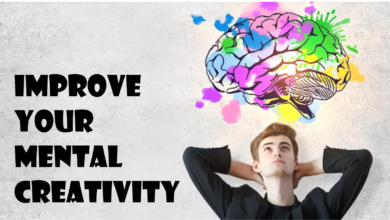What Is Racial Ambiguity?

What Is Racial Ambiguity?
In recent years, discussions about race and identity have become increasingly common. One term that has emerged in these discussions is “racial ambiguity.” But what exactly does this term mean, and why is it important?
Defining Racial Ambiguity
Racial ambiguity refers to the state of having a physical appearance or background that is difficult to classify as belonging to a specific racial group. This can occur for several reasons.
For example, someone may have a mixed racial background, making it difficult to determine which racial group they most closely identify with. Alternatively, someone may have physical features that are not typically associated with any particular racial group.
Why does Racial Ambiguity, Matter?
Racial ambiguity can have important implications for how individuals are perceived and treated by others. In some cases, racially ambiguous individuals may face discrimination or prejudice because their appearance does not fit neatly into preconceived notions about what someone from a particular racial group should look like.
On the other hand, some racially ambiguous people may be perceived as more exotic or unique, which can lead to positive stereotypes. However, this can also be problematic, as it reinforces the idea that certain racial groups are inherently different or “other.”
Navigating Racial Ambiguity
For racially ambiguous individuals, navigating social situations can be challenging. They may feel pressure to “choose” a particular racial identity, or they may struggle to find acceptance within any one racial group.
One approach that some people take is to embrace their ambiguity and reject the idea that they need to fit into any one racial category. This can be empowering, but it can also lead to feelings of isolation or exclusion from broader social networks.
Another approach is to actively seek out connections with others who share their racial ambiguity. This can provide a sense of community and support, but it can also reinforce the idea that people who are racially ambiguous need to stick together to be accepted.
Ultimately, how individuals choose to navigate their racial ambiguity will depend on several factors, including their personal experiences, cultural background, and social context.
Racially Ambiguous People as Allies to POC Groups
Racially ambiguous people can serve as valuable allies to people of color (POC) groups. Because of their ability to navigate between different racial categories, they may have a unique perspective on issues of race and identity that can help advance social justice causes.
Additionally, they may be able to use their privilege and access to resources to advocate for and support POC communities. However, racially ambiguous people need to acknowledge their privilege and work to dismantle systems of oppression that affect all marginalized groups, not just those they identify with.
By working together and supporting each other, racially ambiguous people and POC groups can build a more equitable and inclusive society for all.
Conclusion
Racial ambiguity is a complex issue that touches on many aspects of identity and social interaction. While it can present challenges. It can also provide an opportunity for individuals to question. Challenge traditional notions of race and identity. By acknowledging and embracing our racial ambiguity, we can help to create a more inclusive and accepting society for everyone.
Frequently Asked Question
- What does it mean to be racially ambiguous?
Racial ambiguity refers to having a physical appearance or background that is difficult to classify as belonging to a specific racial group.
2. How does racial ambiguity affect how people are treated?
Individuals who are racially ambiguous may face discrimination or prejudice. Their appearance does not fit neatly into preconceived notions. About what someone from a particular racial group should look like. They may also be perceived as more exotic or unique. Which can lead to positive stereotypes but can also be problematic.
3. Can someone be racially ambiguous if they have a mixed racial background?
Yes, someone with a mixed racial background may be considered racially ambiguous if their physical appearance does not easily fit.
4. How do people who are racially ambiguous navigate their identity?
Individuals who are racially ambiguous may choose to embrace their ambiguity and reject the idea, they need to fit it. They may actively seek out connections with others who share their ambiguity to find a sense of community and support.
5. Is racial ambiguity a new concept?
No, It has existed throughout history as a result of migration and other factors that led to blending of groups.











